When designing or renovating a compact bathroom, one of the most crucial decisions is the choice between a wall-hung toilet and a floor-mounted toilet. In tight quarters—whether in urban apartments, boutique hotels, or small guest bathrooms—every inch of space counts. Choosing the right style of toilet can make your bathroom feel larger, function better, and even simplify cleaning and maintenance.
In this article, we'll compare wall-hung and floor-mounted toilets across multiple dimensions: space efficiency, installation complexity, structural requirements, maintenance, cost, aesthetics, and suitability for different settings (residential, hotel, project builds).
1. Understanding the Two Types: Wall-Hung vs. Floor-Mounted Toilets
Floor-Mounted Toilets (Traditional)
A floor-mounted toilet is the conventional style: the base of the toilet rests on the floor, with a visible waste pipe or trapway connecting to the drain beneath. The tank can be either attached behind the bowl or hidden in a wall cistern installation. Floor-mounted is the default choice in many homes because it is relatively straightforward to install and doesn't require specialized structural support.
Advantages
● Widely understood and accepted by plumbers and installers
● Simpler connection to standard plumbing layouts
● Often less expensive in parts and labor up front
● Easier retrofit into older buildings without structural alteration
Limitations in Small Bathrooms
● The bulk of the base occupies the floor area
● Harder to clean behind and under the toilet base
● The visual weight of the fixture may make tight spaces feel more cramped
Wall-Hung Toilets
A wall-hung toilet (or wall-mounted toilet) is mounted to a solid wall structure, with the bowl suspended above the floor and the cistern hidden behind the wall. Only the seat and bowl are visible, plus a flush actuator plate on the wall.
Advantages
● Frees up floor space, creating a more open and airy feel
● Easier to clean underneath (no base to scrub around)
● Offers an adjustable height during installation (within limits)
● A modern, sleek aesthetic that enhances design appeal
Challenges / Requirements
● Requires a reinforced wall or carrier frame to support the weight
● Installation is more complex and may require structural modifications
● Access to the cistern (in-wall) must be planned (service panels, flush plate removal)
● Upfront cost (parts + labor) is typically higher
2. Space Efficiency & Visual Impact
In a small bathroom—say, 4 × 6 ft (1.2 × 1.8 m) or a powder room—the visual impression matters as much as the actual square footage. A bulky floor-mounted base visually cuts off the floor plane; by contrast, a floating bowl preserves the sense of continuity from wall to floor.
Space-saving features of wall-hung toilets:
Open floor sight lines: With nothing obstructing the lower part of the room, small bathrooms feel less cramped.
Compact depth designs: many wall-hung models come in shallower depths (e.g.,500 mm or less), ideal for narrow bathrooms or between studs.
Flexible location of flush plate: since the cistern is hidden, the flush actuator can be placed on a partition or decorative wall, freeing up traditional tank space.
Of course, a floor-mounted toilet can also be compact and efficient if you choose a short projection model. But visually and spatially, wall-hung often wins in tight settings.
3. Structural and Installation Considerations
Weight Support & Wall Reinforcement
Because a wall-hung toilet must support the weight of the user entirely via the wall or carrier system, the supporting structure must be robust:
A steel carrier or in-wall frame is usually installed between wall studs (or tied into masonry backing).
The wall behind the toilet (drywall, tile, etc.) must be capable of handling the mounted loads.
In new builds or renovations, this is often planned from the start; in retrofits, careful structural assessment is necessary.
Many manufacturers of bathroom sanitary ware provide certified carrier systems rated for heavy loads (e.g., 400 kg). When you work with a manufacturer that offers OEM/ODM capability, you can often integrate custom specifications (carrier height, plate positions) to suit your project.
Plumbing and Access
Cistern location: With wall-hung toilets, the cistern is concealed. You'll need to plan for access panels or removable plates for future maintenance (valves, flushing mechanisms).
Connection alignment: Pipes (flush inlet, waste outlet) must align precisely with in-wall carrier placement. Mistakes can be difficult to remediate after finishes are in place.
Slope and trap alignment: The slope for waste discharge and trap location must adhere to code. For floor-mounted toilets, this is often straightforward; for wall-hung toilets, the waste outlet typically drops vertically or into a sanitary tee behind the wall.
Installation time & cost
Because of these added complexities, a wall-hung installation typically takes longer and costs more in labor and materials than a floor-mounted unit. Framing, precise plumbing alignment, and finishing all demand more coordination.
4. Maintenance, Cleaning & Long-Term Use
A bathroom fixture's performance over time is just as important as its initial appeal.
Cleaning
Wall-hung: no base touching the floor — cleaning under and around the toilet is much easier.
Floor-mounted: the base often collects dust, grout, grime; edges are harder to reach.
Repairs & Access
Wall-hung: since most working parts (cistern, fill valve, flush valve) are hidden in the wall, repairs often require opening access via the flush plate or removal panels. A reliable manufacturer or OEM/ODM partner will design service-friendly access.
Floor-mounted: internal parts are more accessible (inside the tank or behind an access panel), usually simpler to service.
Durability & Parts Replacement
Quality sanitary ware from reputable manufacturers ensures long lifespans, dependable flush mechanisms, and easy access to spare parts.
If you work with a supplier with OEM/ODM services (like Gunies), you can ensure parts standardization, custom branding, and supply continuity.
5. Cost Comparison & Budget Planning
Upfront cost
Floor-mounted toilets are generally cheaper to manufacture, ship, and install.
Wall-hung toilets involve additional expense: carrier frame, wall reinforcement, extra plumbing precision, and finishing.
Long-term value
The ease of cleaning and enhanced aesthetics may boost property value or guest satisfaction (in hotel or hospitality settings).
Hidden plumbing and flexible layout can make future remodeling easier.
Budget planning tip: Allocate a higher contingency (10–20%) for wall-hung installations to accommodate surprises in structural or plumbing alignment.
6. Suitability for Different Settings
Residential Apartments & Homes
In tight urban interiors, a wall-hung model can transform a “shoebox” bathroom into one that feels more open. The ability to adjust seat height is also helpful for accessibility. However, for homes with load-bearing limitations or without flexibility in wall structure, a compact floor-mounted model may be more practical.
Hotels, Boutique Lodging & Hospitality Projects
In hospitality, aesthetics and ease of maintenance are high priorities. Guests appreciate modern design and cleanliness; staff appreciate fixtures that reduce cleaning time. Wall-hung toilets are often favored in upscale boutique hotels or high-end vacation rentals. For midscale or budget properties, a reliable compact floor-mounted toilet still offers value with less installation complexity.
Commercial / Public Buildings & Shopping Malls
Public or semi-public restrooms demand robustness, ease of maintenance, and vandal-resistant features. Either style can work if the manufacturer supplies heavy-duty parts, stainless steel flush operators, and locking panels. But wall-hung designs may require more frequent inspection of hidden plumbing access points.
Project Buildings & Developer Specifications
Large residential or commercial developments often specify plumbing fixtures in the early stages. Working with a manufacturer that offers OEM & ODM services—like Gunies—allows you to standardize a model across multiple units, customize branding, and streamline ordering. Gunies' experience (over 20 years in bathroom sanitary ware, employing 200+ skilled workers) ensures they can support mid-to-large-scale projects. If you provide design drawings, Gunies can craft a sample in 10 days, ensuring you can test fit and aesthetics before mass production.
How to Choose Between Wall-Hung and Floor-Mounted Toilets?
Choosing between a wall-hung and floor-mounted toilet depends on space, budget, and design.
Space & Layout: Wall-hung toilets save floor space and look modern — ideal for small bathrooms, hotels, or apartments. Floor-mounted toilets suit traditional designs and wider layouts.
Installation: Wall-hung models need reinforced walls, while floor-mounted ones fit most bathrooms easily.
Cleaning & Maintenance: Wall-hung toilets make cleaning easier under the bowl, but floor-mounted toilets are simpler to maintain.
Budget: Wall-hung toilets cost more upfront but add value; floor-mounted toilets are more budget-friendly.
Gunies offers both types with OEM & ODM customization, ensuring quality and design suited to your project needs.
Tips for Designing Around Toilets in Small Bathrooms
Here are some practical design tricks to get the most from your space—whether using wall-hung or floor-mounted fixtures:
Offset the toilet slightly — shift it 2–3 cm off center so doors or cabinetry can avoid interference.
Use sliding or pocket doors — this recovers swing space that competes with toilets.
Install niches or recessed shelving — recess above or beside the toilet for rolled towels or storage.
Choose a slimline flush plate — a minimal flush actuator reduces visual clutter.
Match color tones — lighter colors on walls/floor make the space feel larger; contrast with toilet accent if desired.
Use a transparent or low-profile divider — glass walls between toilet and shower preserve visual openness.
Optimize floor slope & drainage — small bathrooms must have an efficient slope to avoid puddles.
Allow service access — even with wall-hung toilets, ensure flush plates come off cleanly, and that valves can be reached.
Wall-Hung / Floor-Mounted Toilets Manufacturer
Conclusion
Selecting the right toilet affects both the look and function of your space. Wall-hung toilets maximize space and create a modern aesthetic, while floor-mounted toilets offer simplicity and versatility.
Gunies provides high-quality wall-hung and floor-mounted toilets, tailored through OEM & ODM services. From design to delivery in about 45 days, Gunies delivers professional craftsmanship for hotels, homes, shopping malls, and projects.
For space optimization and lasting quality, choose Gunies, your trusted bathroom sanitary ware partner.

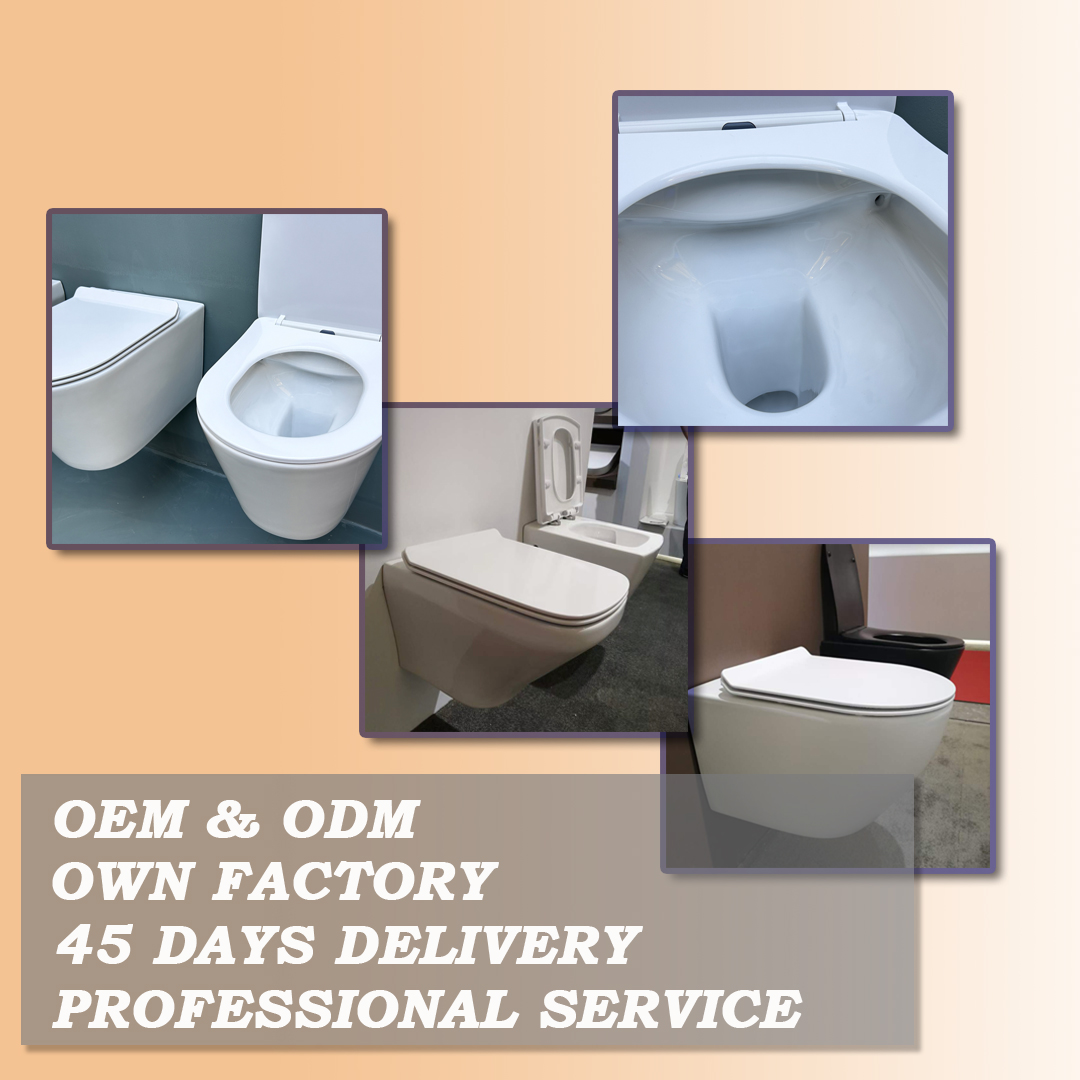
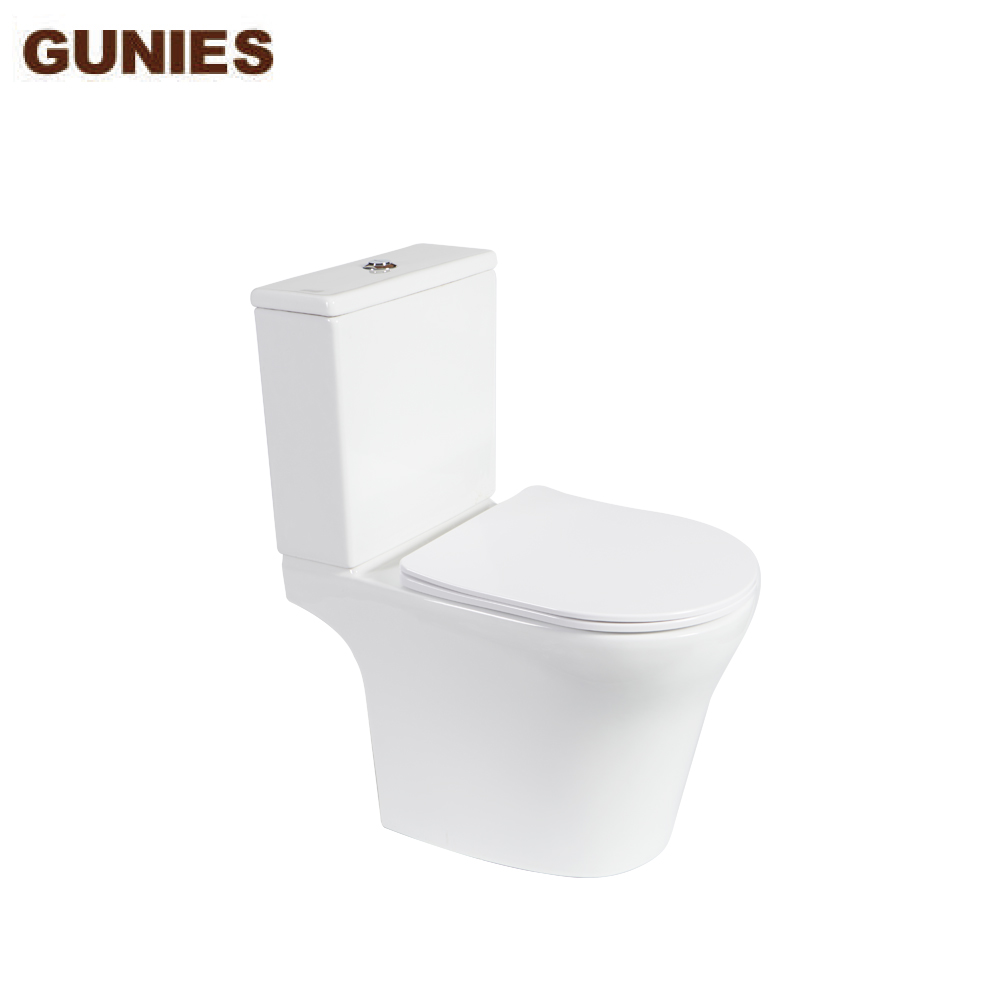
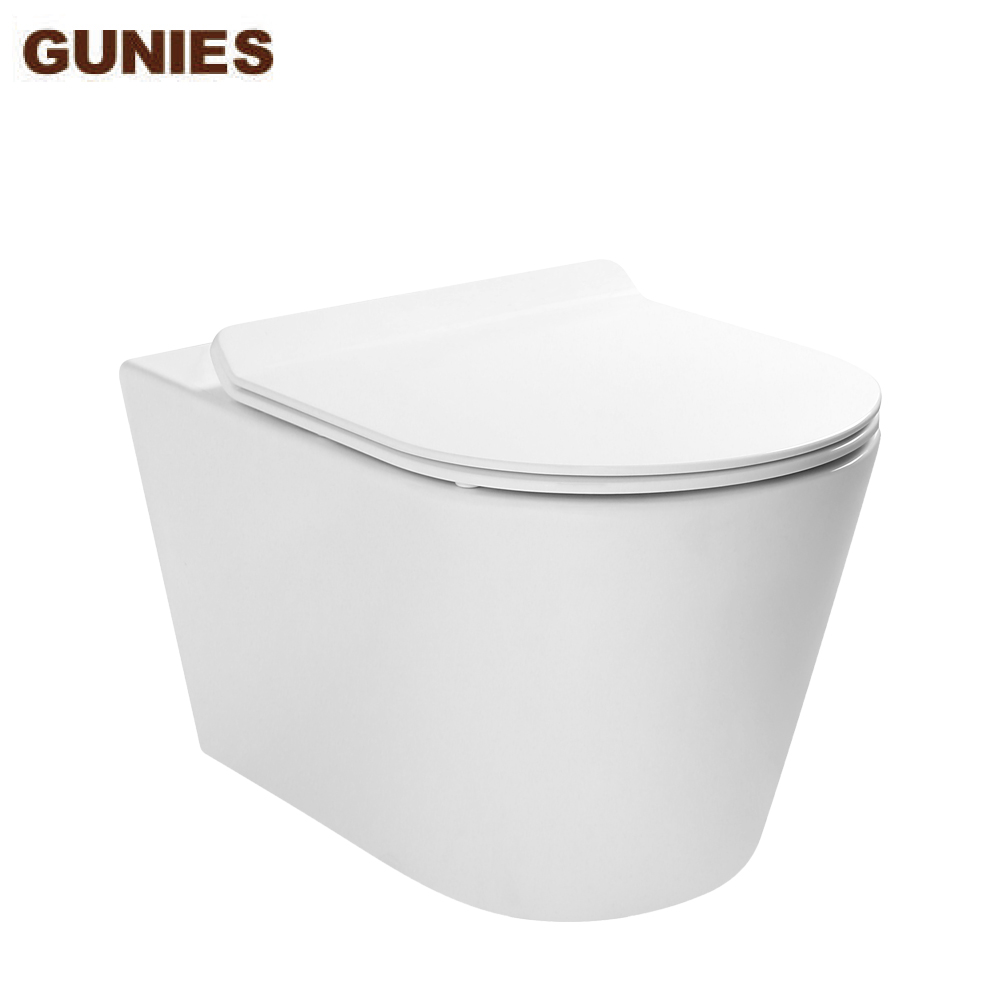
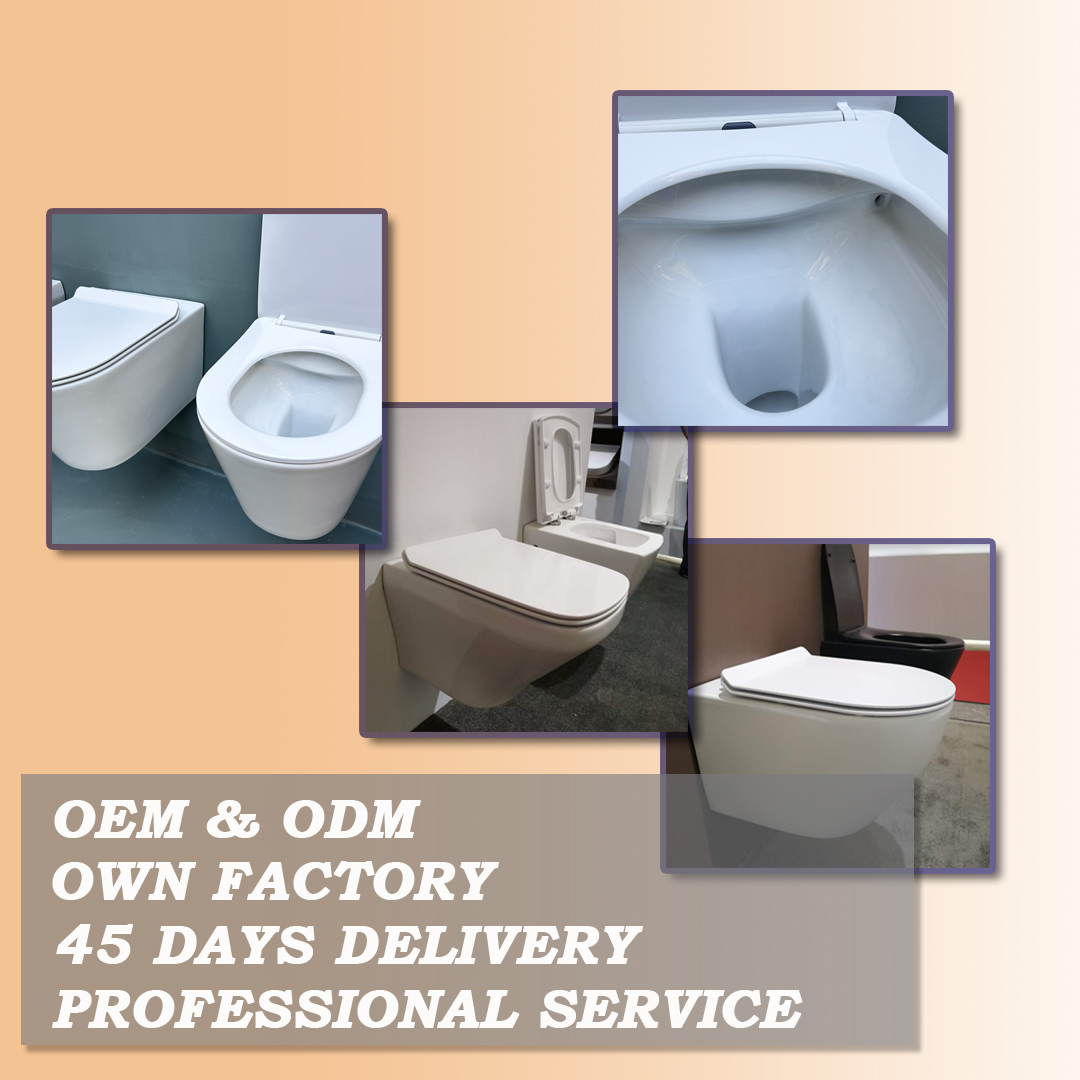
_12011.jpg)
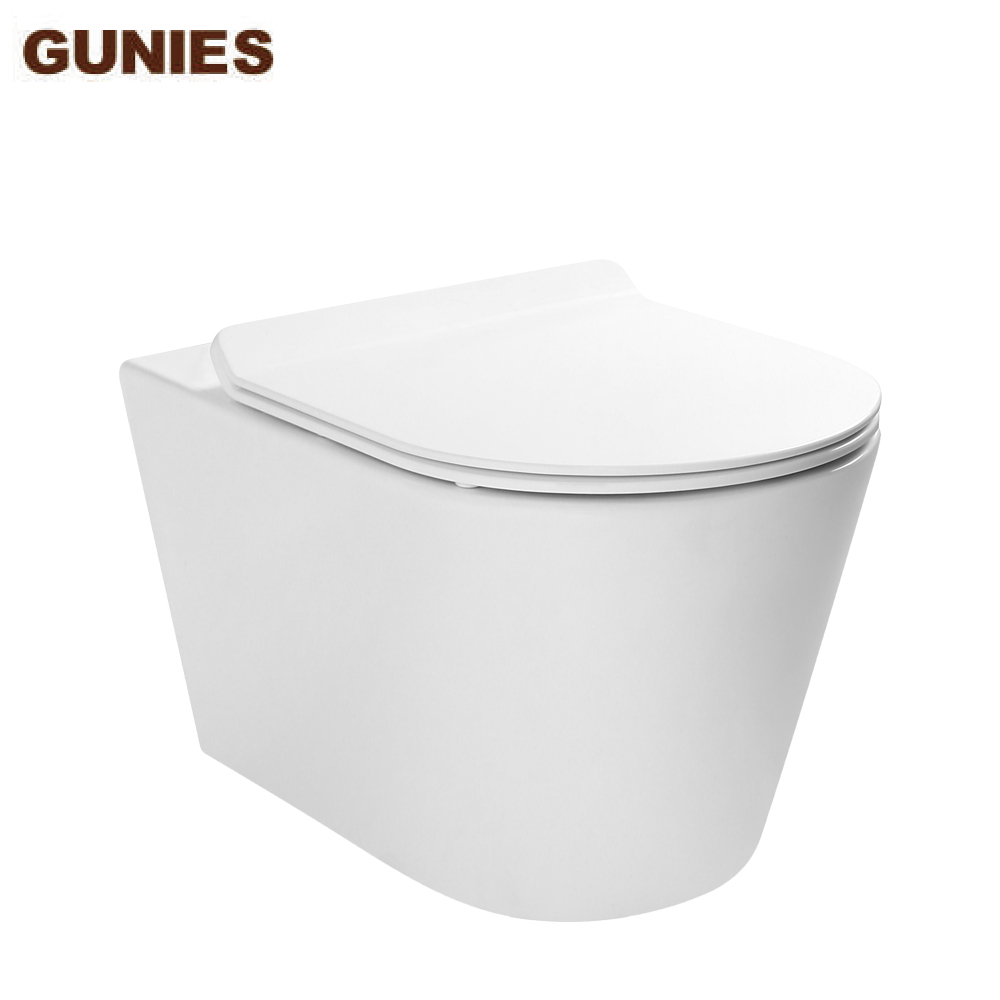
__1__12017.jpg)